El Borge best things to see and do
DO Malaga raisin
El Borge is an authentic white village in Axarquia

In this article you will find the essential information on things to see in El Borge :
- A few words about El Borge
- What to see in El Borge?
- An ancient and curious tradition in El Borge
- What to see around the village
- What to do in El Borge?
- activities
- ideas for guided tours
- ferias and fiestas
- Where is El Borge?
- Booking accommodation
- Some useful links
- Experiences to discover in the province of Málaga

A few words about El Borge
El Borge is a beautiful white village in Axarquia in the province of Malaga. Its name dates from the Al-Andalus period and comes from the Arabic, Al-Borg (the tower) or Al-Burch (the bastion).

El Borge is part of the Ruta de la Pasa (Raisin Route), together with the villages of Comares, Cutar, and Moclinejo.

What to see in El Borge
El Borge is a very special white village.

The Rosario church
This is a beautiful church.

It is a bit different from the churches in the surrounding villages.

To the right of the church, you can enter the crypt.

In the centre of the village, after visiting the church and its crypt, I recommend a stop at the bar El Chumbao to have a drink and taste some tapitas.
The house of El Bizco
This is the house of one of the greatest Andalusian bandits: El Bizco de El Borge.

The house where he was born now houses a very good restaurant : La Posada del Bandolero :
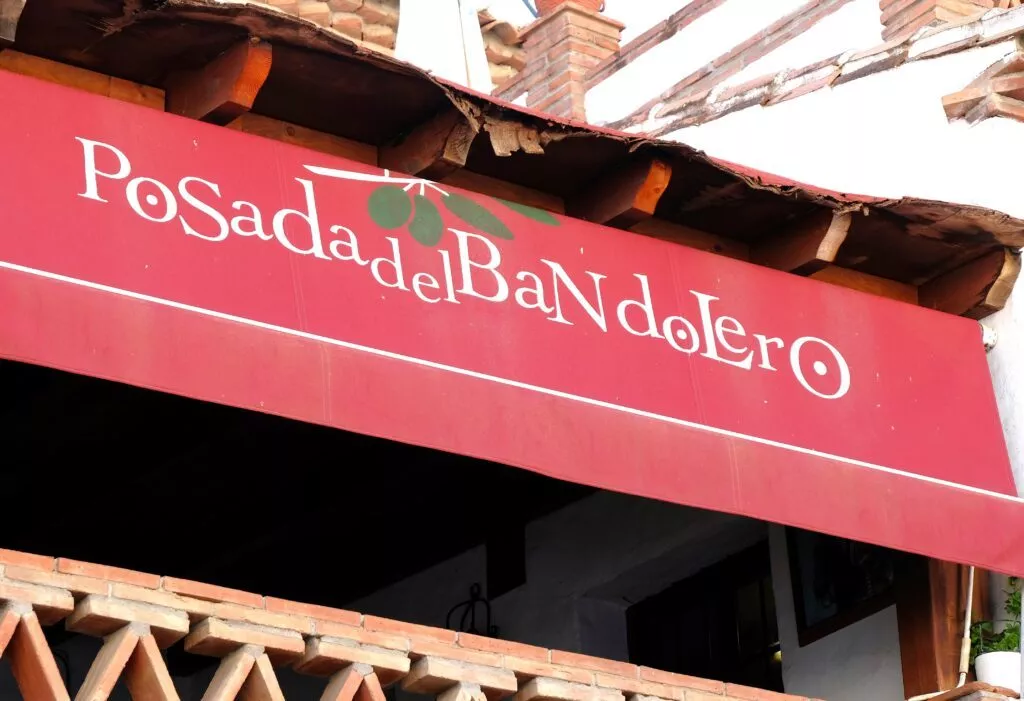
The Andalusian Banditry Museum was also housed in the bandit’s house until recently.
In 2023, the Andalusian Banditry Gallery was opened a little further on in the village. The museum has been expanded since the purchase of the collection of the Bandolero de Ronda museum in 2021.

A colonel of the Guardia Civil, José Osuna Pineda, said of El Bizco de El Borge: un hombre valiente, que se jugaba la vida cara a cara.

The Andalusian Bandit Gallery is a marvellous little museum not to be missed. Here’s a link to more information on the Galeria del bandolero in El Borge.
A fountain of Arabic origin
This Arabic fountain has been somewhat modified but has retained its original style.
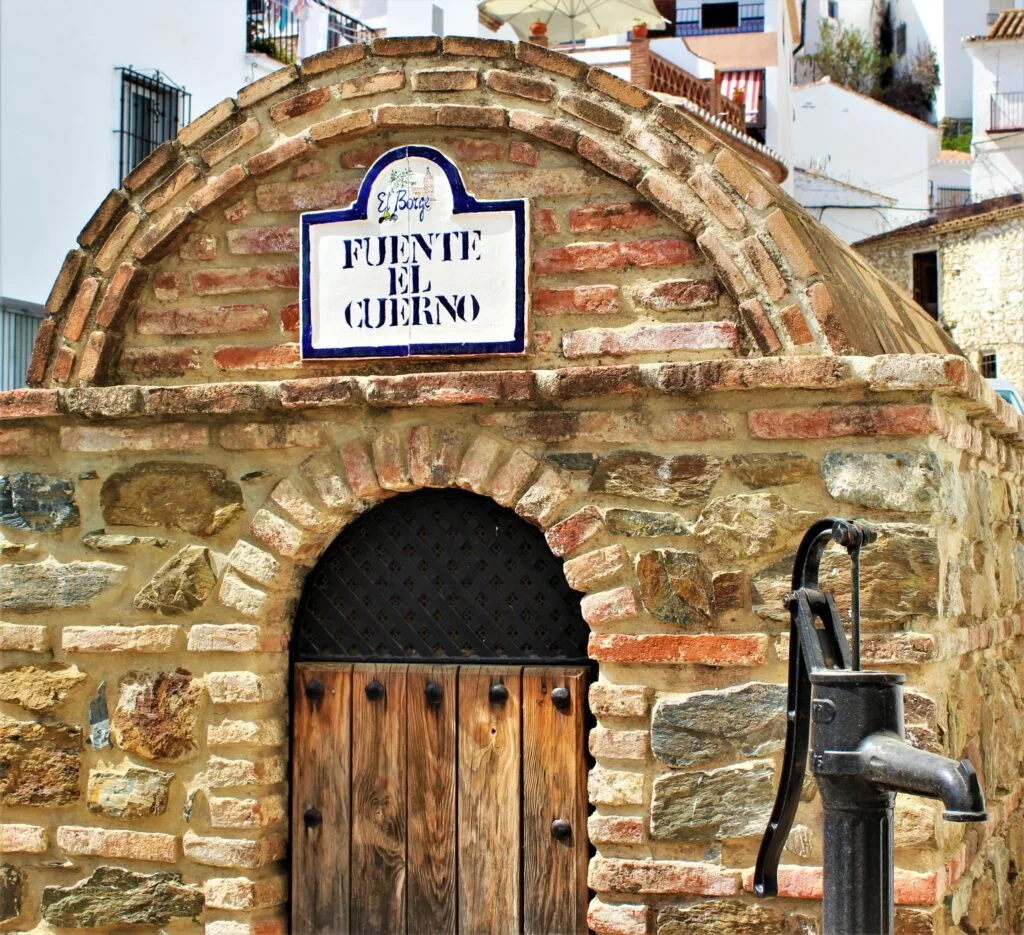
Walking through the narrow streets of El Borge
As in many villages, the alleyways are often narrow and some houses have remained absolutely authentic.

A walk through the village brings you face to face with things that are sometimes surprising.

In one of the streets, you will find a large number of tools used in the fields in the 20th century, attached to the facades of the houses.

You can even see a chumbero, the precious tool used to harvest prickly pears:

And you can also see many objects that were used in daily life at home, such as the coffee grinder. Coming from a big city, it is always surprising to see the respect of everyone not to touch these objects hanging on the facades of the houses.
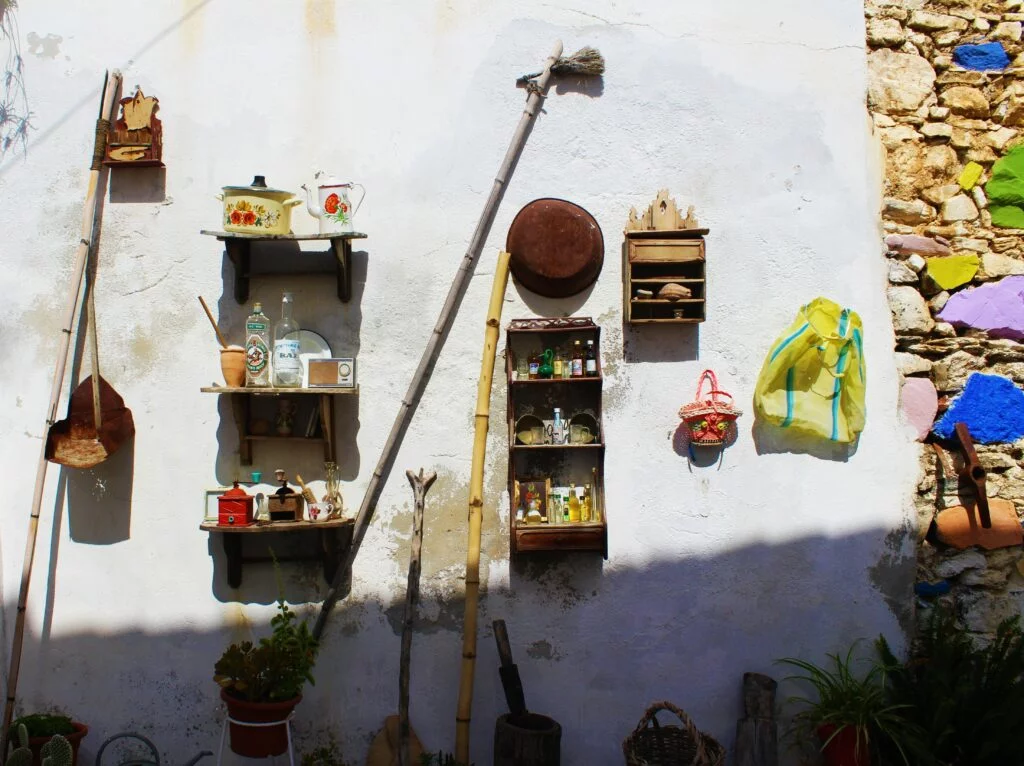
In another street of El Borge:

Cats are also part of the scenery…

even at siesta time 🙂

The photo of the street below will bring back many memories! This street is right next to the house of the bandit El Bizco.
Walking around the village, you’ll come across dogs instead, like this magnificent podenco :


The portrait of Ibn Al-Baitar
Ibn Al-baitar was a great doctor and botanist during the period of Al-Andalus, who lived in El Borge.

It was this botanist who started the cultivation of oranges and lemons in the province of Malaga!
An ancient and curious tradition in El Borge
Among the singular traditions of the village (a tradition that has now been abandoned) was the Trabucazo.

It consisted of men declaring their love in a very special way. The man would come on a Sunday to the exit of the Nuestra Sra del Rosario church, with his rifle (el Trabuco) and wait for his beloved to pass in front of him to shoot the rifle at her feet…
The village is known as the capital of the Pasa (“Raisin”)
The cultivation of vines, and in particular Muscatel vine, is part of the life of the villagers.

Around the village you can see many vineyards in the mountains:

The speciality of the village is sultanas. The grapes come from the Muscatel vine (Muscatel of Alexandria).
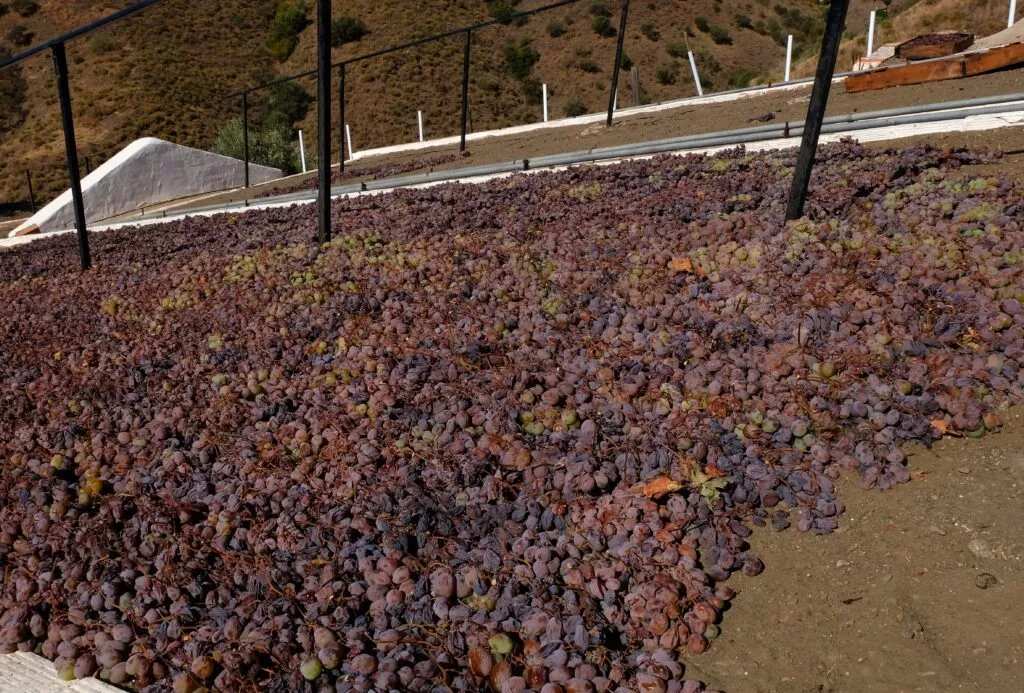
This vine is also used to make the famous Malaga wines.
All the cultivation of the vine has remained very traditional for centuries, everything is done by hand, accompanied by a mule. The vineyard is on the side of the mountain, no mechanised equipment can reach it. The grapes are then dried on “paseros” (to be seen!).
UN (FAO) has declared the vine growing method in El Borge an Agricultural Heritage of Humanity.

In 2018, the FAO (a UN body) recognised the cultivation of vines here as a SIPAM (System of Ingenious World Agricultural Heritage).

In 2018, the FAO (a UN body) recognised the cultivation of vines here as GIAHS.
What to see around the village
There are many villages around El Borge to discover, such as Almachar or Moclinejo. If you have to choose just one, then the ideal place to visit is Comares.
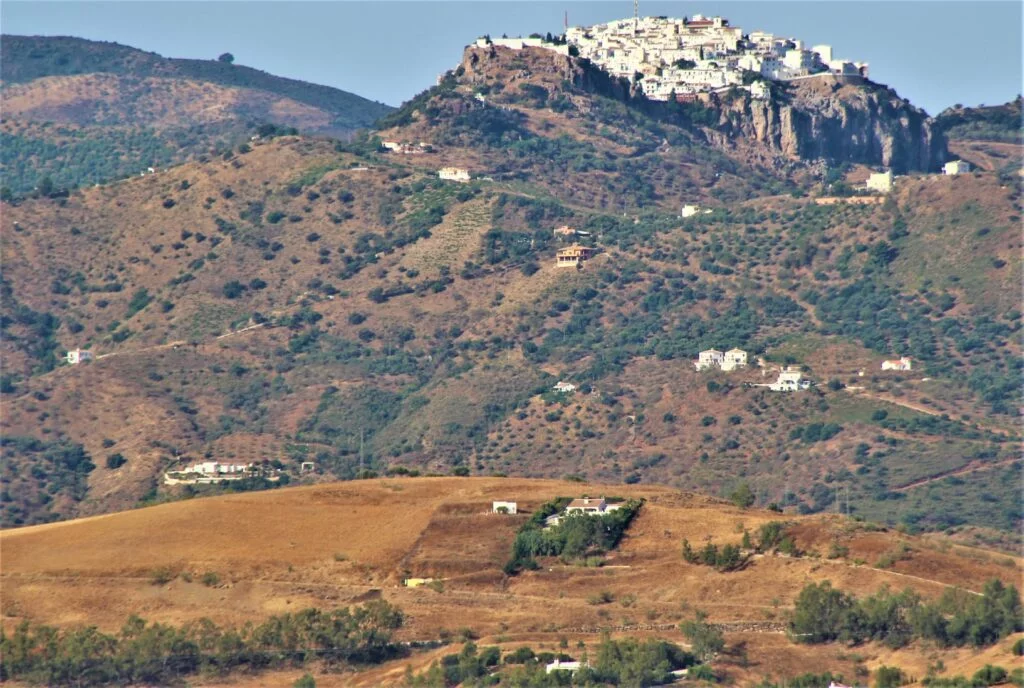
Comares, a village perched on top of a mountain, is known as the Balcony of Axarquia. It offers magnificent views and the village has remained totally authentic.
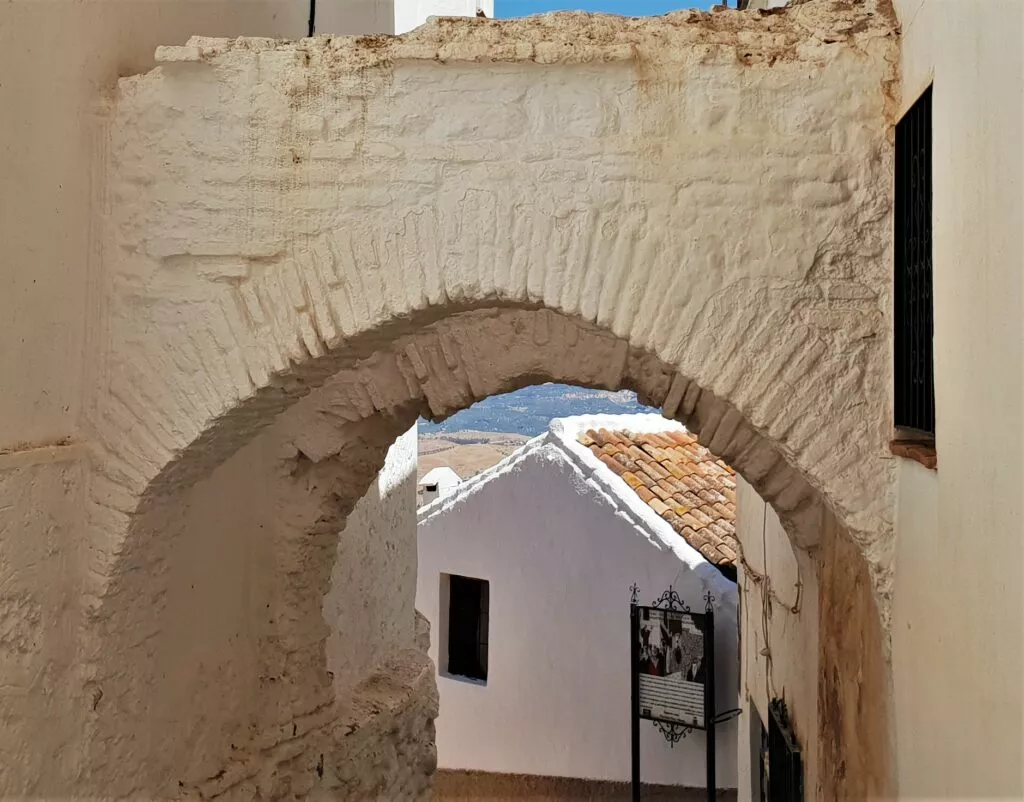
What to do in El Borge?
Activities
In the surrounding area, it is possible to find some great activities:

- horse riding, on the beach or in the mountains
- diving in Nerja and Torrox
- guided tours (villages of Axarquia, Cordoba, Alhambra,…)
- via ferrata of Zafarraya
- hiking (rio Chillar, El Saltillo with the hanging bridge,…)
- canyoning (in the rio Verde,…)
- hiking in Nerja with a guide
- snorkeling
- visit of caves
Use the following link to access all the activities to do. This link provides you with all the details of each activity.
Guided tour idea
A very good local guide, Cipriano, offers thematic and seasonal guided tours of the villages of Axarquia. These tours leave from Nerja, Torrox and Torre del Mar

For example, Cipriano organises a visit to the Ruta de la Pasa (Raisin Route).
This excursion allows you to discover an incredible tradition, that of the cultivation of Malaga Raisin. An exceptional excursion, only possible 2 months a year.

The guided tours are always done in small groups (2 to 8 people max.) to discover the authentic Axarquia.
In the following link you will find all the details and prices of the tours he offers.
The themes of the tours are: the white villages of Axarquia, the wine route, the olive oil route, Frigiliana ans El Acebuchal Tour….
Here are all the guided tours from Torrox, Nerja and Torre del Mar.
Village fiestas

- Día de la Pasa, 3rd Sunday in September
- Carnival, end of February
- Verdiales Festival, in October
- Romería de San Marcos, April 25
- Fiestas de San Gabriel, late March and early April
- Romería de San Isidro, May 15
Where is El Borge?
Booking accommodation
Enter the desired dates to check availability.
Some useful links (car hire, ideas for visits)
Easy and economical bookings
If you are in Andalucia as part of a tour with several major cities to visit, here are some links that may be of interest:
Seville
Seville, the capital of Andalucia, is a city full of treasures to discover and monuments to visit.

Here you will find everything you can see in Seville in 3 days. And for those who will stay longer you will also find information on secret Seville and the Santa Cruz and Triana districts.
Cadiz

Visit Cadiz, a city with an incredible past and great beauty, on the Costa del la Luz.
Malaga
When you reach the Costa del Sol you will find in this link all must-sees in Malaga :

Granada
Discover what to see in Granada, and visit the Albaicin and Sacromonte districts:

Cordoba
And of course, visit Cordoba, the caliphate city, and the Juderia district

Experiences to discover in the province of Malaga
If you are in the area for a few days, here is a selection of great activities:
Find more ideas for visits to authentic Andalucia: see the blog pages on Andalucia.
Here is the link to receive our newsletter from the andaluciamia.com blog
The latest articles on Andalucia
-
Interactive map of Andalucia with best places to see

An interactive map of Andalucia to discover the sites to see around your holiday destination or to prepare a tour or road-trip.
-
Top 15 Must-See Attractions in Ubeda, Spain

Here are the best places to visit and what to see in Ubeda. This Renaissance-style capital city of Andalusia is a marvel.
-
Visit Olula del Rio, the Mujer de Almanzora and the museum

Olula del Rio see its 3 wonders: an extraordinary marble sculpture, a surprising museum and an incredible photography centre.
-
Fiesta del Queso in Zuheros Cordoba

Discover the incredible Cheese Festival – Fiesta del Queso in Zuheros, one of the most beautiful white villages in Spain.





